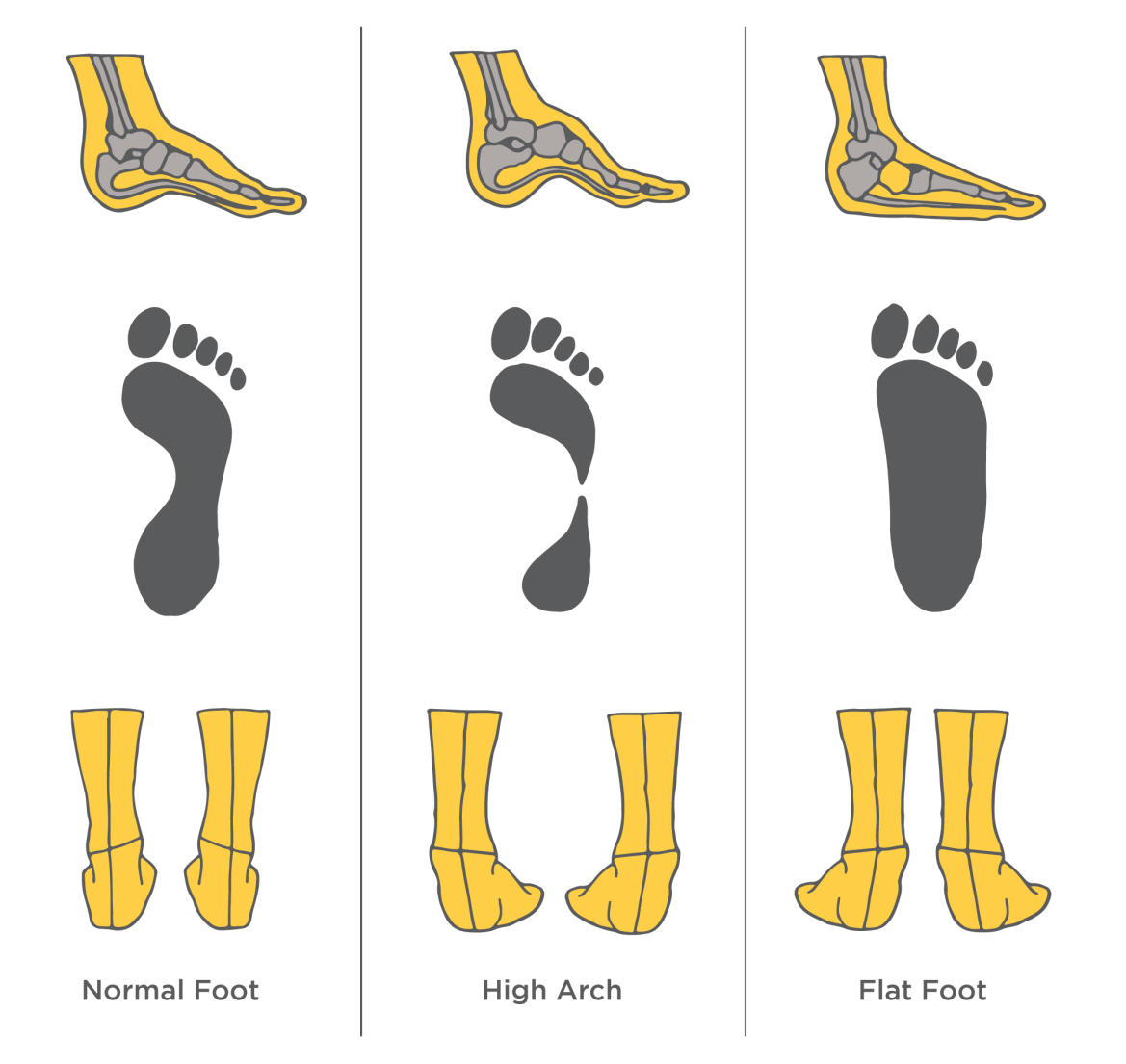No More Sore Feet: How to Find Your Perfect Active Shoe
- Category: Preventative Healthcare, Seasonal
- Posted On:
- Written By: Dr. Jason Bruse

Whether you're a marathoner or working on getting a few more steps logged this year, the right shoes make all the difference. Walking, running, and playing sports all cause repetitive motions that can wear down our feet, legs, and hips. Podiatrist Jason Bruse shares his top three checkpoints to choosing your perfect pair. Afterall, each of our needs will vary depending on our foot anatomy, stride, and gait (how we move when walking/running).
Checkpoint 1: How big is your arch?
Look at your footprint to determine how much of a natural arch your foot has. People with high arches, or a lot of space in their mid-foot, should not choose shoes with added arch support, since it will tilt their foot outward too much and they won't move evenly.
People with flat feet (low to no arch) do need additional support in the arch. They should choose running or walking shoes with added arch support.
For a more thorough analysis, consider visiting a podiatrist for a running evaluation.
Checkpoint 2: Are your toes crammed?
Our feet swell during the day, so we recommend shopping for shoes in the afternoon. Regardless of if you shop in-store or online, look for running or walking shoes with room in the toebox. Crammed toes cause pain, poor circulation, lost toenails, and instability. Every type of foot will have problems if the toe box is too narrow.
Nearly all people can benefit from getting a half-size larger than what they normally wear for activity shoes since it's when our feet swell the most.
Checkpoint 3: Have you shopped in-store lately?
Online shopping is awesome because you have the best chance of finding your size, preferred color, and maybe even a deal. But if you’ve never been to an athletic shoe store, it’s beneficial to go at least once.
At a specialty store, you can test out several pairs of shoes standing, walking, and running on a treadmill. Trained employees can help assess your gait and natural arch. They may also ask about previous injuries and other input that can help them find a complimentary shoe for you.
When you find a pair you love, jot down the brand and model then stick to it! Oftentimes, you can find your preferred shoes online at a markdown price when it’s time for a new pair.
Bonus care: Wear synthetic socks
“Runners really need to be in synthetic socks,” says Ogden Clinic Podiatrist Dr. Bruse. “Cotton is the worst for distance runners because it holds onto moisture and keeps it against the skin.” This can cause blisters, fungal infections, or athlete’s foot. Consider materials like lightweight wool and nylon which are antimicrobial and wick moisture away from the foot.
When is it time to replace your activity shoes?
For most active people, the mid-sole will give out first, usually after 300 miles (6 – 8 months) or so. If you put less miles on your shoes, they can stay sturdy for one or even two years. Other signs that it's time for a new pair are:
- Your insoles have worn down (there is no longer shock-absorbent cushioning inside)
- Your outsoles have lost their tread
- You’re feeling pain such as muscle fatigue, shin splints, or pain in your knee(s).
Want a athletic shoe assessment?
Dr. Bruse performs running evaluations and all other podiatric services at his office in Layton, Utah. If you’re training for a race or tend to be injury-prone, schedule an appointment with Dr. Bruse.